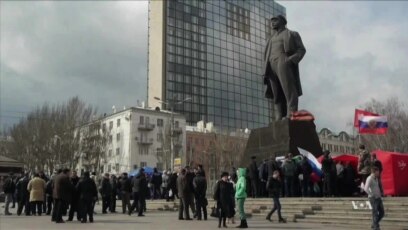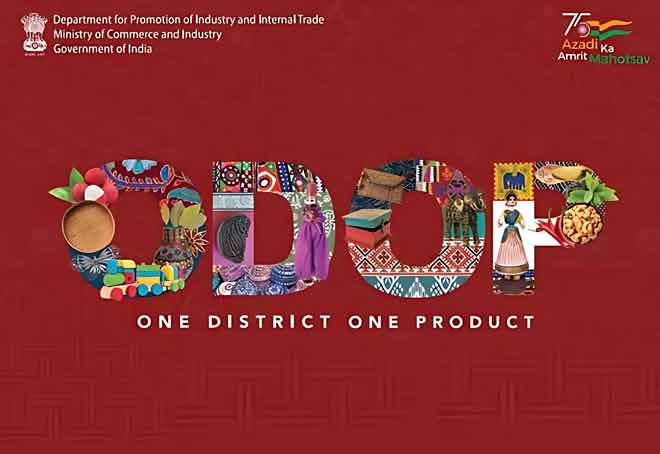The Plate tectonics-प्लेट टेक्टोनिक्स
The concept of plate tectonics was formulated in the 1960s. According to the theory, Earth has a rigid outer layer, known as the lithosphere, which is typically about 100 km (60 miles) thick and overlies a plastic layer called
the asthenosphere. Partially molten/ Brittle crust and the top part of the upper mantle)-
The layer below the crust is the mantle. The uppermost part of the mantle is solid and, along with the crust, forms the lithosphere( partially molten).
The rocky lithosphere is brittle and can fracture. This is the zone where earthquakes occur.
Tectonic plates-
It's the lithosphere that breaks into the thick, moving slabs of rock that geologist's call tectonicplates.
There was a transition 3.2 billion years ago, and rocks formed after that could be related to plate tectonic processes."
The lithosphere is broken up into about a dozen large plates and several small ones. These plates move relative to each other, typically at rates of 5 to 10 cm (2 to 4 inches) per year, and interact along their boundaries, where they converge, diverge, or slip past one another.
Such interactions are thought to be responsible for most of Earth’s seismic and volcanic activity, although earthquakes and volcanoes are not wholly absent in plate interiors .
The Major and Minor Plates-
The major plates are-
1-The India-Australia-New Zealand plate
2-The North American plate (with western Atlantic floor separated from the South American plate along the Caribbean islands)
3-The South American plate (with western Atlantic floor separated from the North American plate along the Caribbean islands)
4-The Antarctic (and the surrounding oceanic) plate
5-The Africa with the eastern Atlantic floor plate
6-The Pacific plate
7-Eurasia and the adjacent oceanic plate
-Some important Minor plates include:
Nazca plate: Between South America and Pacific plate
Cocos plate: Between Central America and Pacific plate
Arabian plate: Mostly the Saudi Arabian landmass
Philippine plate: Between the Asiatic and Pacific plate
Caroline plate: Between the Philippine and Indian plate (North of New Guinea)
Fuji plate: North-east of Australia
Juan De Fuca plate: South-West of North American Plat
Types of plate boundaries
Three types of plate boundaries exist, with a fourth, mixed type, characterized by the way the plates move relative to each other. They are associated with different types of surface phenomena. The different types of plate boundaries are:
Transform Divergent Convergent
1-Transform boundaries /Conservative plate boundary.
(Conservative) occur where two lithospheric plates slide each other along transform faults, where plates are neither created nor destroyed.
Strong earthquakes (no volcano’s )can occur along a fault. E.g.-The San Andreas Fault in California.
2.Divergent boundaries (Constructive) –
Occur where two plates slide apart from each other. At zones of ocean-to-ocean rifting, divergent boundaries form by ……seafloor spreading, allowing for the formation of new ocean basin.
As the ocean plate splits, the ridge forms at the spreading center, the ocean basin expands .
This creates a series of Volcanoes& Earthquakesall the way along the boundary.
An example of a constructive plate boundary is the……. mid-Atlantic Ridge.
3-Convergent boundaries (Destructive) (or active margins) –
Occur where two plates slide toward each other to form either a subduction zone (one plate moving underneath the other) or a continental collision. e.g. the Andes mountain range in South America .
Plate motions cause mountains to rise where plates push together, or converge, and continents to fracture and oceans to form where plates pull apart, or diverge. The continents are embedded in the plates and drift passively with them, which over millions of years results in significant changes in Earth’s geography.
lithosphere-asthenosphere boundary is a zone of detachment.
As the lithospheric plates move across Earth’s surface, driven by forces as yet not fully understood, they interact along their boundaries, diverging, converging, or slipping past each other. plate boundaries are the sites of many of the principal processes that shape the terrestrial surface, including earthquakes, volcanism, and orogeny (that is, formation of mountain ranges).
|
- (Q) Explain the origin of Himalayas on the basis of Plate Tectonics theory. (please answer in100 words)(PSC- Mains -2018) - (Q) What is plate Tectonic theory? Describe the role of Plate Tectonoinic in sea-floor spreading and continental displacement. (please answer in 300 words) (PSC- Mains -2017) |
Endogenic Process-
The energy originating from within the earth is the main force behind endogenic geomorphic processes.
This energy is mostly produced by rotational and tidal friction, radioactivity, and primordial heat from the origin of the earth.
- This energy due to geothermal gradients and heat flow from within induces diastrophism and volcanism in the lithosphere.
- Due to differences in geothermal gradients and heat flow from within, strength and crustal thickness, the action of endogenic forces are uneven.
- Therefore the tectonically regulated original crustal surface is not uniform
Diastrophism –
Refers to deformation of the Earth's crust, and more especially to folding and faulting.
Diastrophism can be considered part of geo tectonics.
Diastrophism comes from the Greek word meaning a twisting.
An Orogen –
Orogenic belt develops when a continental plate crumples and is pushed upwards to form one or more mountain ranges.
Epeirogenic movements–
(Greek: ‘epeiros’–land, continent) relate to the behaviour of continental platform or stable blocks involving broad gentle upwarping of relatively large crustal areas.
These are vertical movements, caused by radial forces and are characterised by large scale upliftment, subsidence or submergence and emergence of land areas.
The movements involved are so slow and widespread that no obvious fracturing or folding is produced in the rock.
|
What is the difference between orogenic and epeirogenic movements? -Epeirogenic – forces are Vertical forces ,act along radials ,responsible for features like isostasy(lighter crust floating on the denser) and faulting in the Earth's crust. Epirogenic forces cause Land forming depressions orUplifts/ upheavals of land with long wavelengths and broad ripples . They are continent making they make continent. Epeirogenic movements may divert rivers and create drainage divides by upwarping Epeirogenic movement has caused the southern Rocky Mountain -Orogenic movements- Horizontal movements Work as Tangent to the earth ,responsible for Plate Tectonics Causes formation of both fold and block mountains as well as rift valleys |
Sudden movements:
They cause considerable deformation over a short span of time, and may be of two types: earthquakes and volcanoes.
Exogenic forces-
Are a direct result of stress induced in earth materials by various forces that come into existence due to sun’s heat.
Weathering, mass wasting/movements, erosion and transportation are included in denudation
|
Mantle Plume and its role in plate tectonics- -Mantle plume is an upwelling of abnormally hot rock within the earth’s mantle -The rising column makes a mushroom-shaped cap to the plume. -Heat transferred from the plume raises the temperature in the lower lithosphereto above melting point, and forms magma chambers that feed volcanoes at the surface. Role of mantle plume in plate tectonics: -Mantle plumes transport primordial mantle material from below the zone of active convection that produce time-progressive volcanic chains, break up continents and act as a driving force for plate tectonics -They cause the lithosphere to swell and shear because of heat . -Mantle plumes contribute to continental rifting and the formation of ocean basins. –Hotspots- Mantle plumes are volcanic centres known as hotspots and probably have also caused flood basalts. Flood basalt is formed by an eruption or series of eruptions of large volcanic episodes that cover vast stretches of land or ocean floor with flows of mafic igneous rocks (basalt lava flows). A flood-basalt province is popularly known as Trap (Deccan Traps in India). The material and energy from Earth’s interior are exchanged in two distinct modes: 1- Plate tectonic regime driven by upper mantle convection, and 2- Mantle plume intermittent convection helps in mountain building and continental breakup. -Hawaian Island-The formation of the Hawaiian Island and Emperor Seamount chain in the middle of the Pacific Plate are caused by mantle plume. Q-Define …..mantle plume and explain its role in plate tectonics? IAS-2018 |
Faults
A fault is a fracture or zone of fractures between two blocks of rock. Faults allow the blocks to move relative to each other.
This movement may occur rapidly, in the form of an earthquake - or may occur slowly, in the form of creep.
Faults may range in length from a few millimeters to thousands of kilometers.
Different types of Faults
A close look at faults helps geologists to understand how the tectonic plates have moved relative to one another.
Types of movement of crustal blocks that can occur along faults during an earthquake:
1. Normal faulting -
Where the crust is being pulled apart,….. normal faulting occurs, in which the overlying (hanging-wall) block moves down with respect to the lower (foot wall) block.
2. Reverse faulting -
Where the crust is being compressed,….. reverse faulting occurs, in which the hanging-wall block moves up and over the footwall block – reverse slip on a gently inclined plane is referred to as thrust faulting.
3.‘Strike-slip’ -
Crustal blocks may also move sideways past each other, usually along nearly-vertical faults.
‘Strike-slip’ -
This ….‘strike-slip’ movement is described as sinistral when the far side moves to the left, and dextral, when the far side moves to the right.
-Sinistral-On the left side or the left hand.A fault is sinistral if, to an observer standing on one block and facing the other, the opposite block appears to have been displaced to his left.
-Dexetral- On the right side or the right hand.The fault is dextral if the movement is to the right.
4. An oblique slip involves various combinations of these basic movements, as in the 1855 Wairarapa Fault rupture, which included both reverse and dextral movement
Faults can be as short as a few metres and as long as 1000km. The fault rupture from an earthquake isn’t always a straight or continuous line. Sometimes there can be short offsets between parts of the fault, and even major faults can have large bends in them.



.jpg)


.jpg)
.jpg)
.jpg)


.jpg)

.jpg)
